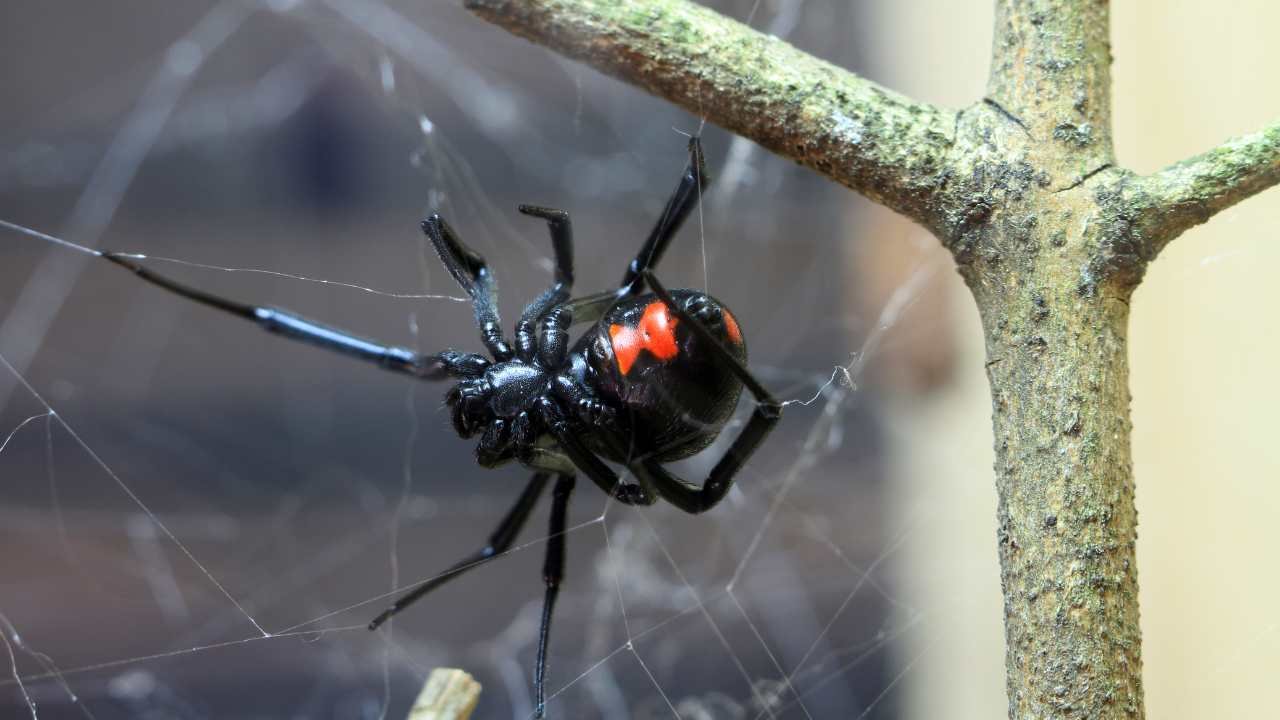Spiders, the eight-legged arachnids that have both fascinated and frightened humans for centuries, come in a myriad of shapes, sizes, and colors. Among the vast array of spider species, one particular type has captured the attention of many: the black spider with a distinctive red dot on its back. But what makes this spider so intriguing? Why do people search for it, and what should they know about it?
The allure of this spider isn’t just its striking appearance but also the curiosity surrounding its nature. Is it dangerous? Where can it be found? What does that red dot signify? These are just a few of the questions that might run through someone’s mind upon hearing about or encountering this spider. This article aims to shed light on these queries and provide a comprehensive understanding of this unique arachnid.
Whether you’re an arachnophile (a person who loves spiders) or someone who just stumbled upon this spider in their garden and wants to know more, this guide will offer insights into the world of the black spider with a red dot on its back. Let’s embark on this journey of discovery together!
Black Spider Red Dot On Back
Identification of the Spider
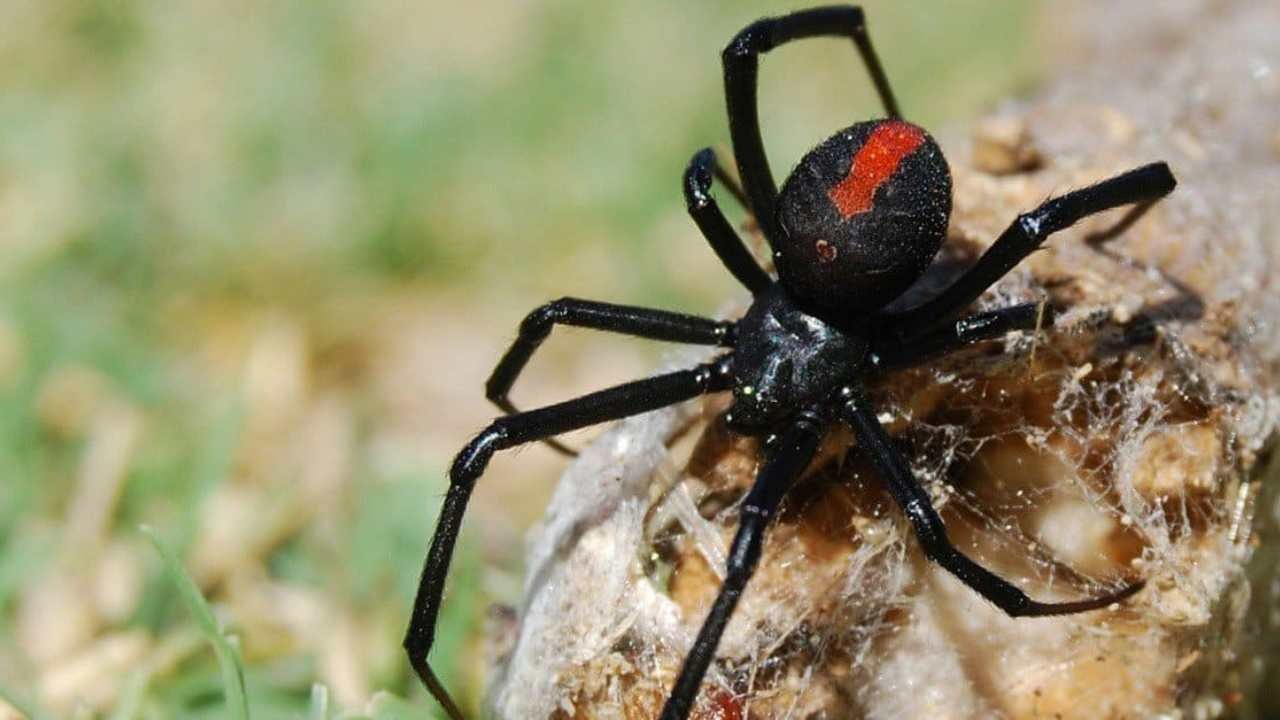
Physical Characteristics
When it comes to identifying the black spider with a red dot on its back, several physical characteristics set it apart from other spiders:
- Size: This spider is typically medium-sized, with adult females being larger than their male counterparts. On average, they can range from 1 to 1.5 inches in length, although this can vary depending on the specific species and region.
- Shape: Like most spiders, it has a two-part body: the cephalothorax (front) and the abdomen (back). The cephalothorax houses its eyes, mouthparts, and legs, while the abdomen is more rounded and is where you’ll find the distinctive red dot.
- Color: As the name suggests, the primary color of this spider is black or dark brown. This dark coloration provides a stark contrast to the red dot, making it easily identifiable.
- Distinctive Features: The most notable feature is, of course, the red dot on its back. However, depending on the species, there might be variations in the shape or size of the dot. Some might have a more elongated mark, while others could have a perfectly round dot.
The Significance of the Red Dot

The red dot on the spider’s back is not just a random marking; it has both biological and ecological significance:
- Is it a common feature among spiders? While many spiders have various markings and patterns on their bodies, a black spider with a specific red dot is relatively unique. Only a few species, like the Black Widow or the Redback Spider, have such a distinctive mark.
- Does it serve a purpose? Yes, the red dot serves multiple purposes:
- Warning Signal: The bright red dot acts as a warning to potential predators that the spider might be venomous or unpalatable. This is a form of aposematism, where animals use bright colors to signal danger.
- Camouflage: In some environments, the red dot can help the spider blend into its surroundings, especially among fallen leaves or certain types of flora.
- Mating: In some spider species, males might be attracted to females with brighter or more prominent markings, indicating good health and fertility.
The black spider with a red dot on its back is not just another spider; it’s an intriguing creature with distinctive features that serve specific functions in its survival and behavior.
Common Names
The world of spiders is vast and diverse, with each species often having multiple common names based on regional variations, appearances, or behaviors. The black spider with a red dot on its back is no exception. Here are some of its most widely recognized common names:
- Black Widow: Perhaps the most infamous of all, the Black Widow is known for its glossy black body and the iconic red hourglass shape on the underside of its abdomen. Found primarily in North America, this spider has a reputation due to its venomous bite, which, while rarely lethal, can cause significant discomfort.
- Redback Spider: Native to Australia, the Redback Spider is closely related to the Black Widow. It’s easily identifiable by the red stripe on its back, which can sometimes appear as a dot or patch. Like the Black Widow, the Redback is also known for its potent venom.
- Katipō: Found in New Zealand, the Katipō is another relative of the Black Widow and Redback Spider. Its name means “night-stinger” in the Māori language. The female Katipō is black with a distinctive red or orange stripe on its back, making it a part of the “red dot” family of spiders.
- Button Spider: In some parts of Africa, similar spiders are often referred to as Button Spiders. They too have a glossy black appearance with red markings, although the patterns can vary.
It’s essential to note that while these spiders share similar markings, they have distinct habitats, behaviors, and levels of venom potency. However, the commonality in their names and appearances underscores the importance of understanding each species individually, especially if you live in or are traveling to regions where they are prevalent.
Geographical Distribution
Understanding the geographical distribution of the black spider with a red dot on its back is crucial for both arachnid enthusiasts and the general public. Knowing where these spiders are commonly found can help in identification, safety precautions, and conservation efforts. Here’s a breakdown of their distribution:
- Black Widow:
- North America: The Black Widow is predominantly found in the United States, especially in the southern and western states. They prefer warmer climates and are often found in undisturbed areas like woodpiles, sheds, or under rocks.
- Central and South America: Some species of the Black Widow have also been identified in parts of Mexico and down into Central and South America.
- Redback Spider:
- Australia: The Redback Spider is native to Australia and is widespread across the continent. They are commonly found in urban areas, hiding in mailboxes, under seats, or in garden sheds.
- Southeast Asia: There have been some reports of Redback Spiders in parts of Southeast Asia, likely due to human transportation.
- Katipō:
- New Zealand: The Katipō is native to New Zealand and is found primarily on the country’s North Island. They prefer sandy beaches and dunes and are, unfortunately, becoming rarer due to habitat loss.
- Button Spider:
- Africa: Button Spiders are commonly found in various parts of Africa. Their habitats can range from natural settings to human-made structures.
In addition to these primary regions, it’s worth noting that globalization and trade have led to some of these spiders being found in areas outside their native habitats. For instance, Redback Spiders have been occasionally spotted in parts of Japan and the Middle East, likely transported through cargo shipments.
Understanding the geographical distribution of these spiders is not just about knowing where they live. It’s also about recognizing the ecological roles they play in these regions and the potential risks or benefits they might pose to local communities.
Habitat
The habitat of a spider not only provides insights into where one might encounter it but also offers clues about its behavior, diet, and role in the ecosystem. The black spider with a red dot on its back, depending on its specific species, can be found in a variety of environments:
- Gardens: Many of these spiders, especially the Redback Spider, are commonly found in gardens. They often set up their webs in quiet, undisturbed areas, such as behind flower pots, in garden sheds, or under garden furniture. Their presence in gardens can be beneficial as they help control pest populations by feeding on insects.
- Homes: While they generally prefer outdoor habitats, these spiders can sometimes find their way into homes. Basements, attics, garages, and other less-frequented parts of a house can provide the shelter and darkness they seek. It’s always a good idea to be cautious when reaching into dark or undisturbed areas in homes, especially in regions where these spiders are prevalent.
- Forests and Woodlands: The Black Widow, in particular, can be found in forests and woodlands. They often build their webs close to the ground, hidden under logs, rocks, or in dense vegetation. The natural environment provides them with ample prey and protection from predators.
- Desert Regions: Some species of the Black Widow are adapted to arid environments and can be found in desert regions. They seek shelter during the hottest parts of the day and become more active during the cooler hours.
- Beaches and Coastal Areas: The Katipō spider is known to inhabit sandy beaches and dunes in New Zealand. They build burrows in the sand, which offer protection and a vantage point to catch prey.
- Urban Areas: As cities and towns expand, some of these spiders have adapted to urban environments. The Redback Spider, for instance, is often found in urban areas in Australia, taking advantage of the numerous hiding spots provided by human-made structures.
Behavior and Habits
The behavior and habits of a spider give us a window into its daily life, survival strategies, and interactions with its environment. The black spider with a red dot on its back, while sharing some common behaviors with other spiders, has its unique set of habits:
Web-building Patterns:

- Tangle Webs: Both the Black Widow and the Redback Spider are known for their irregular, tangle webs. These webs are not the typical symmetrical patterns one might associate with spiders but rather a seemingly chaotic mesh of silk. These webs are incredibly efficient for trapping prey.
- Sheltered Retreats: Within these tangle webs, the spider often creates a sheltered retreat where it hides during the day or when threatened. This retreat is usually a denser silk structure, often located in a corner or a protected area of the web.
- Web Maintenance: These spiders are known to be meticulous about their webs. They will often consume old silk to recycle it and then rebuild parts of their web as needed. This ensures that the web remains sticky and effective for catching prey.
Feeding Habits:
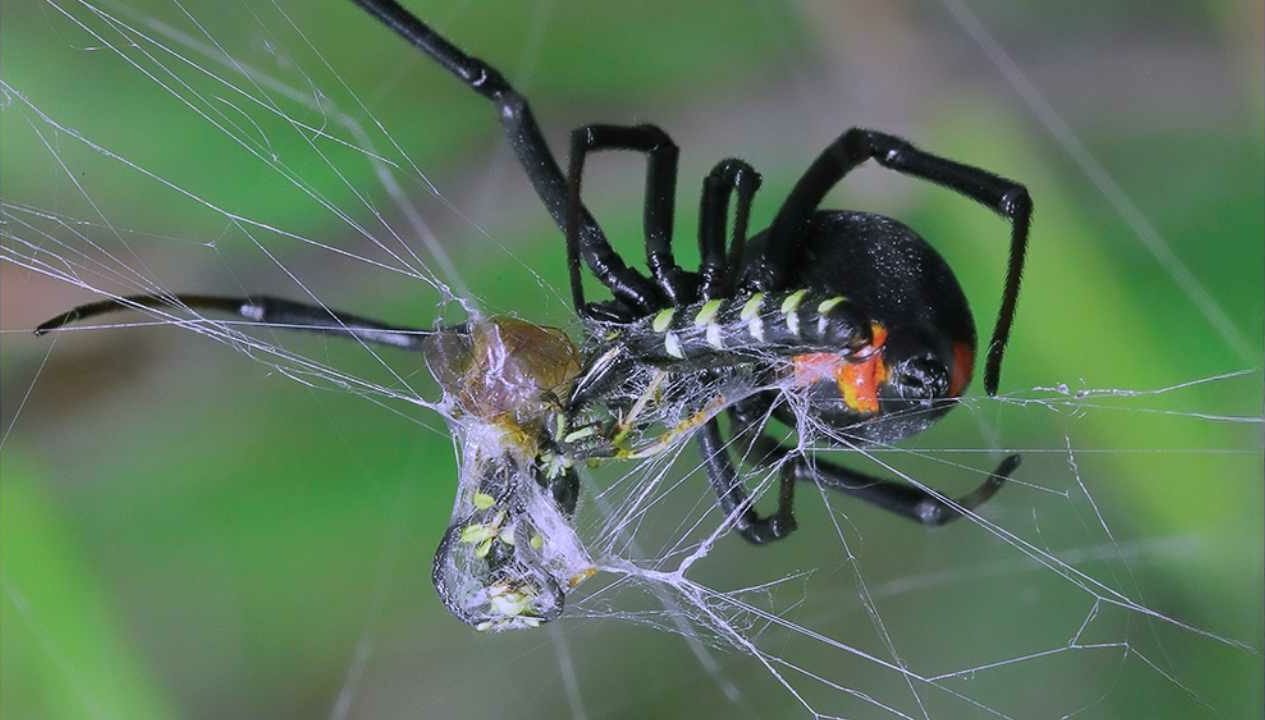
- Diverse Diet: While they primarily feed on insects like flies, mosquitoes, and beetles, they are opportunistic predators. This means they will consume any prey that gets trapped in their web, including other spiders.
- Venomous Bite: Once prey is trapped in their web, they use their venomous bite to immobilize it. The venom not only paralyzes the prey but also begins the digestion process, making it easier for the spider to consume.
- Wrapping Prey: After biting, the spider will often wrap its prey in silk, storing it for later consumption. This allows the spider to have a steady food source, especially during times when prey is scarce.
Activity:
- Nocturnal Behavior: These spiders are primarily nocturnal, meaning they are most active during the night. The cooler temperatures and cover of darkness provide them with the perfect conditions to hunt and maintain their webs without being detected by predators.
- Daytime Retreat: During the day, they usually retreat to the sheltered parts of their web or hide in cracks, crevices, or other protected areas. This behavior helps them avoid predators and the harsh sunlight.
In essence, the behavior and habits of the black spider with a red dot on its back are a testament to its adaptability and survival instincts. Whether it’s the intricacy of its web, its efficient feeding habits, or its nocturnal lifestyle, every aspect of its behavior is geared towards survival and reproduction.
Life Cycle
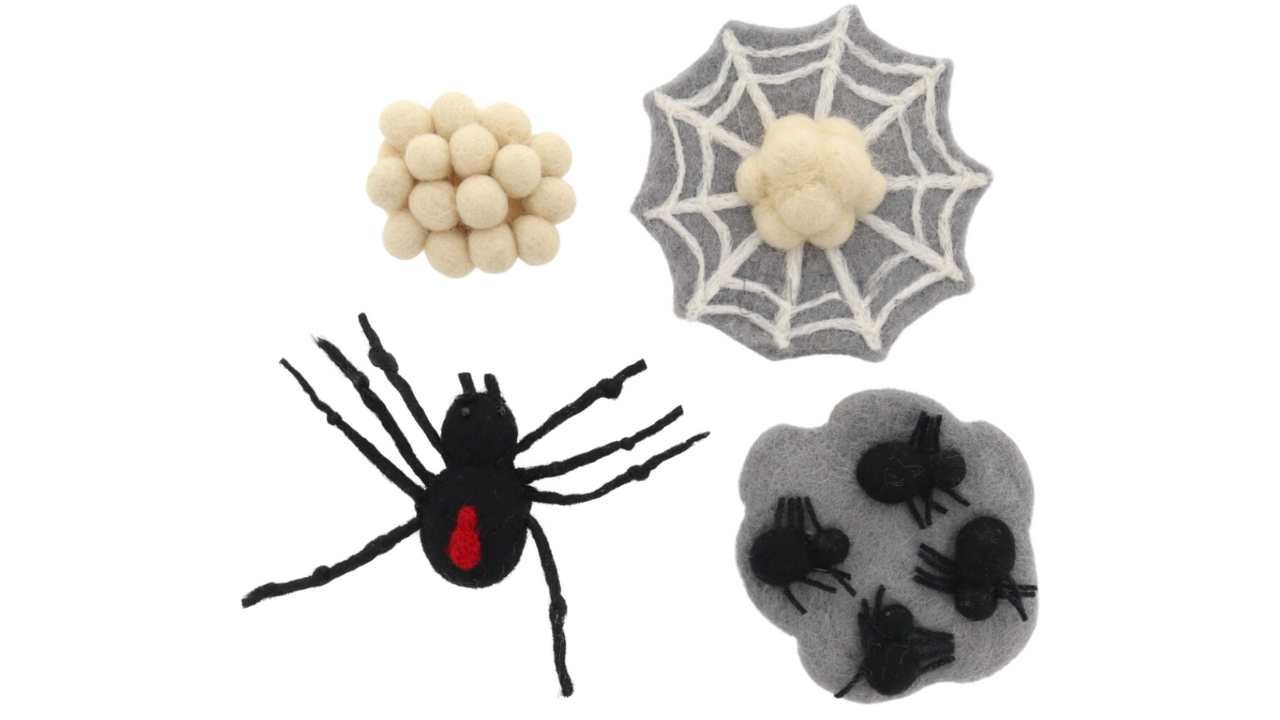
The life cycle of a spider is a fascinating journey from a tiny egg to a mature adult. Understanding this process provides insights into the spider’s growth, development, and reproductive strategies. Here’s a detailed look at the life cycle of the black spider with a red dot on its back:
Stages of Development:
- Egg:
- The life of this spider begins as an egg. The female lays a cluster of eggs, often numbering in the hundreds, inside a silken sac. This sac provides protection from the elements and potential predators.
- Depending on the species and environmental conditions, the eggs can take a few weeks to several months to hatch.
- Juvenile (Spiderling):
- Once the eggs hatch, tiny spiderlings emerge. These spiderlings resemble miniature versions of the adults but are often paler in color.
- Spiderlings are known to undergo a process called “ballooning,” where they release silk threads that catch the wind, allowing them to disperse to new locations.
- As they grow, spiderlings will molt several times, shedding their exoskeleton to allow for growth. Each molt brings them closer to their adult form and coloration.
- Adult:
- Upon reaching maturity, the spider will have its distinctive black coloration and the iconic red dot or marking on its back.
- Adult spiders continue to molt, but at a much-reduced frequency compared to their juvenile stage.
Mating Habits and Reproduction:
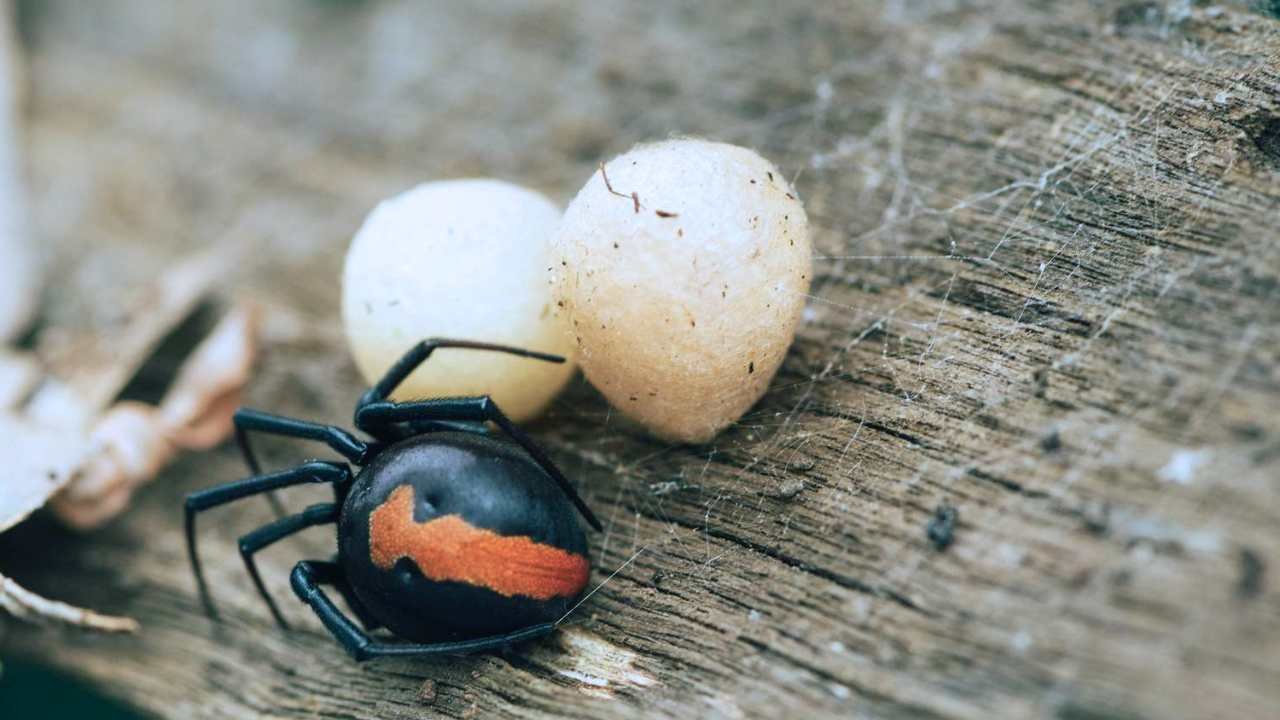
- Courtship:
- Mating in spiders is a delicate and often dangerous affair. Males will perform specific courtship rituals, such as vibrating their bodies or plucking the female’s web, to signal their intentions and avoid being mistaken for prey.
- Mating:
- Once the female is receptive, the male will transfer his sperm to her using specialized appendages called pedipalps. The process is quick, and the male often retreats rapidly afterward to avoid the risk of being eaten by the female.
- Egg-laying:
- After mating, the female will lay her eggs, encasing them in a silken sac. Depending on the species, she might guard the egg sac fiercely, ensuring its protection until the spiderlings hatch.
- Lifespan:
- The lifespan of these spiders can vary based on species, environmental conditions, and potential threats. On average, males tend to live for a few months to a year, while females can live for several years, especially in species like the Black Widow.
Toxicity and Danger to Humans
One of the primary concerns people have about spiders, especially those with distinctive markings like the black spider with a red dot on its back, is their potential danger to humans. Here’s a comprehensive look at the toxicity and associated risks:
Is the spider venomous?
- Yes, the black spider with a red dot on its back, especially species like the Black Widow and the Redback Spider, is venomous. Their venom is a complex mixture of proteins and other compounds designed to immobilize and digest their prey.
Symptoms of a bite:
- Immediate Pain: A bite from one of these spiders is often immediately painful. The pain can be sharp and intense, similar to a pinprick or bee sting.
- Localized Swelling and Redness: The bite site may become red and swollen, with the potential development of a target-like lesion or halo around the bite.
- Systemic Symptoms: In some cases, especially with bites from the Black Widow, systemic symptoms can develop. These might include muscle cramps, fever, chills, nausea, headache, and in rare cases, difficulty in breathing or unconsciousness.
- Sweating and Itching: Some individuals might experience localized sweating around the bite site or generalized itching.
First aid and treatment recommendations:
- Stay Calm: Panicking can increase blood flow and potentially spread the venom faster. It’s essential to remain calm and seek medical attention.
- Do Not Squeeze the Bite: Refrain from squeezing the bite site, as this can spread the venom.
- Immobilize the Affected Area: Keep the bitten limb immobilized at heart level to prevent the venom from spreading rapidly.
- Apply a Cold Pack: Use a cold pack or cloth-wrapped ice to reduce pain and swelling. Do not apply ice directly to the skin.
- Avoid Alcohol and Caffeine: These can increase the absorption of venom.
- Seek Medical Attention: Even if the symptoms seem mild, it’s crucial to seek medical attention as soon as possible. Antivenom is available for severe cases, especially for bites from the Black Widow or Redback Spider.
Historical or notable incidents involving the spider:
- Black Widow: There have been historical accounts of severe envenomations, especially in children or the elderly. However, fatalities are rare, thanks to the availability of antivenom and medical interventions.
- Redback Spider: In Australia, where the Redback Spider is native, there have been numerous bite incidents. Before the introduction of antivenom in the 1950s, there were recorded fatalities, but deaths are now extremely rare.
- Public Perception: Due to their venomous nature and the media’s portrayal, these spiders have often been feared and misunderstood. However, it’s worth noting that they are generally not aggressive and will only bite when threatened or provoked.
In conclusion, while the black spider with a red dot on its back is venomous and can pose a risk to humans, with proper knowledge, precautions, and timely medical intervention, the dangers can be effectively managed.
Prevention and Control
While the black spider with a red dot on its back is a marvel of nature, it’s understandable that people would want to avoid unwanted encounters, especially given its venomous nature. Here are some preventive measures and control methods to ensure safety:
Tips for Avoiding Encounters:
- Regular Inspection: Periodically inspect areas of your home or garden that are less frequented, such as basements, attics, sheds, and garages. Look for webs, egg sacs, or the spiders themselves.
- Wear Gloves: When working in the garden, moving woodpiles, or reaching into dark or undisturbed areas, always wear gloves. This provides a protective barrier against potential bites.
- Seal Entry Points: Ensure that windows, doors, and any cracks in the walls are properly sealed. This prevents spiders from entering your home.
- Keep the Area Clean: Regular cleaning and decluttering can deter spiders from setting up residence. A tidy environment is less attractive to spiders as it offers fewer hiding spots.
- Use Natural Repellents: Some essential oils, like peppermint or eucalyptus, can act as natural spider repellents. Spraying diluted solutions of these oils around entry points can deter spiders.
- Be Cautious at Night: Since these spiders are primarily nocturnal, be extra cautious when moving about in the dark, especially in areas where they are known to be prevalent.
Safe Removal Methods:
- Glass and Cardboard Technique: If you find a spider inside your home, one of the safest ways to remove it is by trapping it using a glass and sliding a piece of cardboard underneath. Once trapped, you can safely release the spider outside.
- Spider Catchers: There are tools available in the market designed specifically for catching spiders without harming them. These can be especially useful for those who are apprehensive about getting too close to the spider.
- Insecticides: While chemical insecticides can be effective, they should be used as a last resort and with caution. Always follow the manufacturer’s instructions and keep them out of reach of children and pets.
- Seek Professional Help: If you suspect an infestation or are unsure about handling the situation, it’s always a good idea to consult with pest control professionals. They can provide guidance and take necessary actions to ensure safety.
Comparison with Similar Spiders
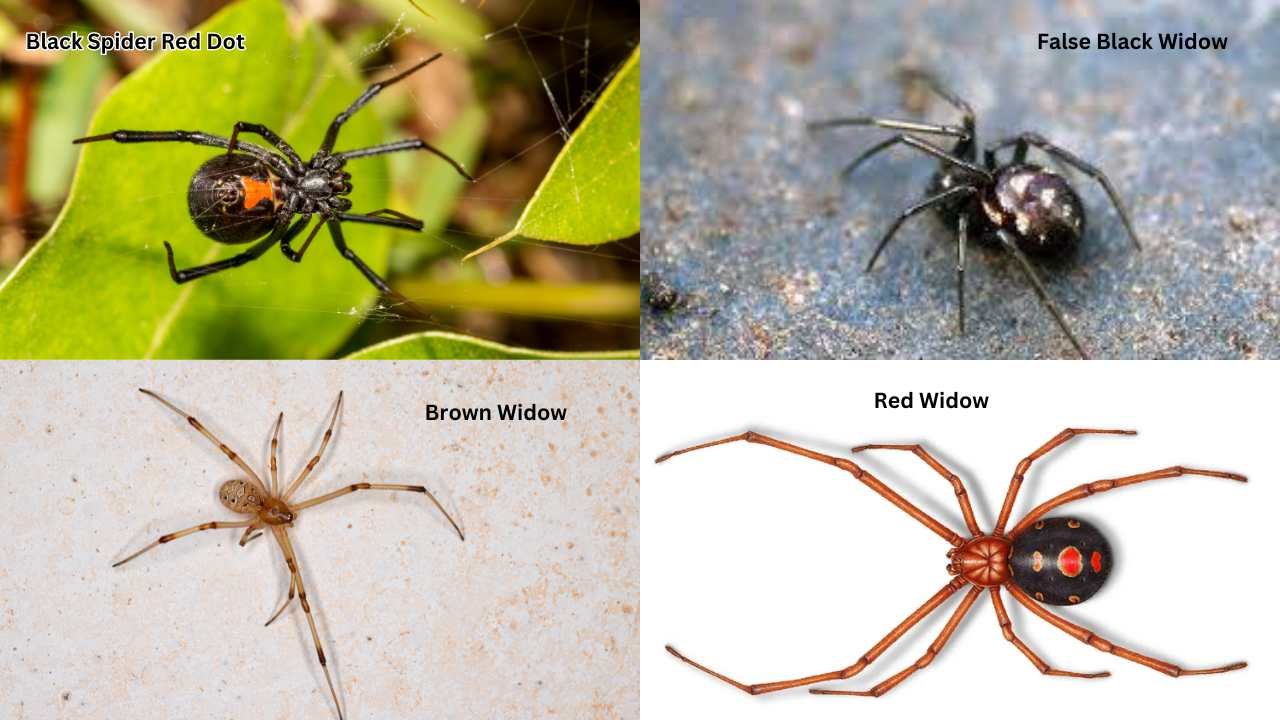
Given the vast diversity of spiders, it’s not uncommon for people to confuse one species with another. Here’s a comparison of the black spider with a red dot on its back with other similar spiders:
False Black Widow:
- Appearance: The False Black Widow is often mistaken for the Black Widow due to its similar coloration. However, it lacks the distinctive red markings of the Black Widow.
- Distribution: While the Black Widow is primarily found in the Americas, the False Black Widow has a broader distribution, including parts of Europe.
- Venom: While it is venomous, its bite is generally less severe than that of the Black Widow.
Brown Widow:
- Appearance: The Brown Widow, as the name suggests, is brownish in color but has similar body shape and markings to the Black Widow, including an orange or yellowish hourglass shape on its abdomen.
- Distribution: Found in various parts of the world, including the southern United States, Africa, and Australia.
- Venom: Its venom is considered less potent to humans than the Black Widow’s.
Red Widow:
- Appearance: The Red Widow has a reddish cephalothorax and a black abdomen with yellow or orange rings, making it distinct from the Black Widow.
- Distribution: It is primarily found in Florida, USA.
- Venom: While venomous, there are limited reports of bites, and its venom’s effects on humans are not well-documented.
Frequently Asked Questions
The black spider with a red dot on its back has piqued the curiosity of many, leading to a plethora of questions. Here are answers to some frequently asked questions about this intriguing arachnid:
1. Tiny black spider with red dot on back – What is it?
This could refer to a juvenile or a smaller species of spider with the characteristic red dot. Juveniles of many spider species often resemble miniature versions of the adults but might have paler or less defined markings.
2. Fuzzy black spider with red dot on back – Is it the same spider?
Not necessarily. Some spiders have a more “fuzzy” or hairy appearance due to setae (hair-like structures) on their bodies. This could be a different species or a variation within the same species.
3. Black spider with red dot on back in Texas – Is it common?
Yes, in Texas, the Black Widow is one of the spiders that fits this description. They are relatively common in the southern and western parts of the state, often found in undisturbed areas.
4. Small spider with red dot on back – Is it a baby spider?
It could be a juvenile or a species that is naturally smaller in size. Not all spiders with a red dot grow to be large; size can vary significantly even within the same species.
5. Spider with one red dot on back – Is it different from the one with multiple dots?
Yes, while the single red dot is characteristic of spiders like the Black Widow, some spiders might have multiple red markings or patterns. Each pattern can be indicative of a different species or a variation within a species.
6. Black spider with 3 red dots on back – What species is this?
This is less common than the single dot pattern. It could be a variation within a species or a less common species altogether. Identification would require a closer examination and possibly consultation with an arachnologist.
7. Black spider with red dot on back – Is it poisonous?
The term “poisonous” refers to organisms that are harmful when consumed. The correct term for spiders is “venomous.” Yes, spiders like the Black Widow and Redback Spider are venomous and can deliver a painful bite.
8. Spider with red dot on belly – Is this the same spider?
It could be. The Black Widow, for instance, has a red hourglass shape on the underside of its abdomen, which could be described as its “belly.” It’s essential to approach with caution and avoid handling the spider.

